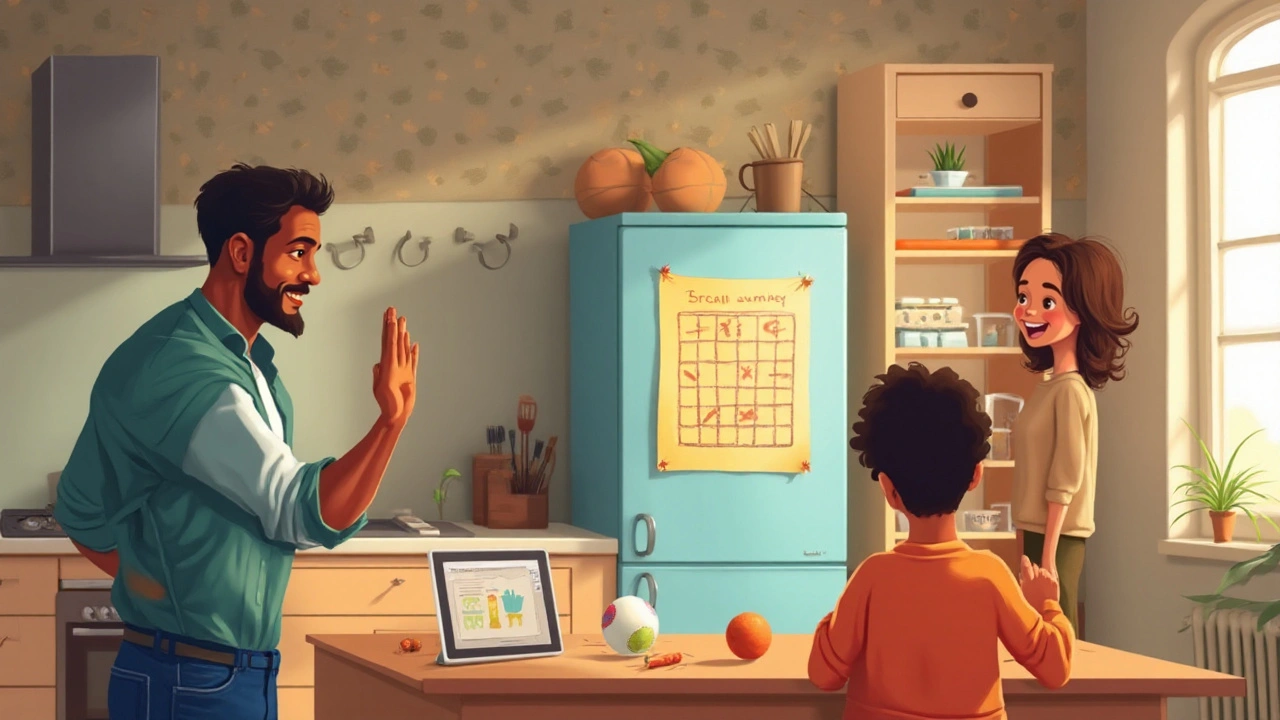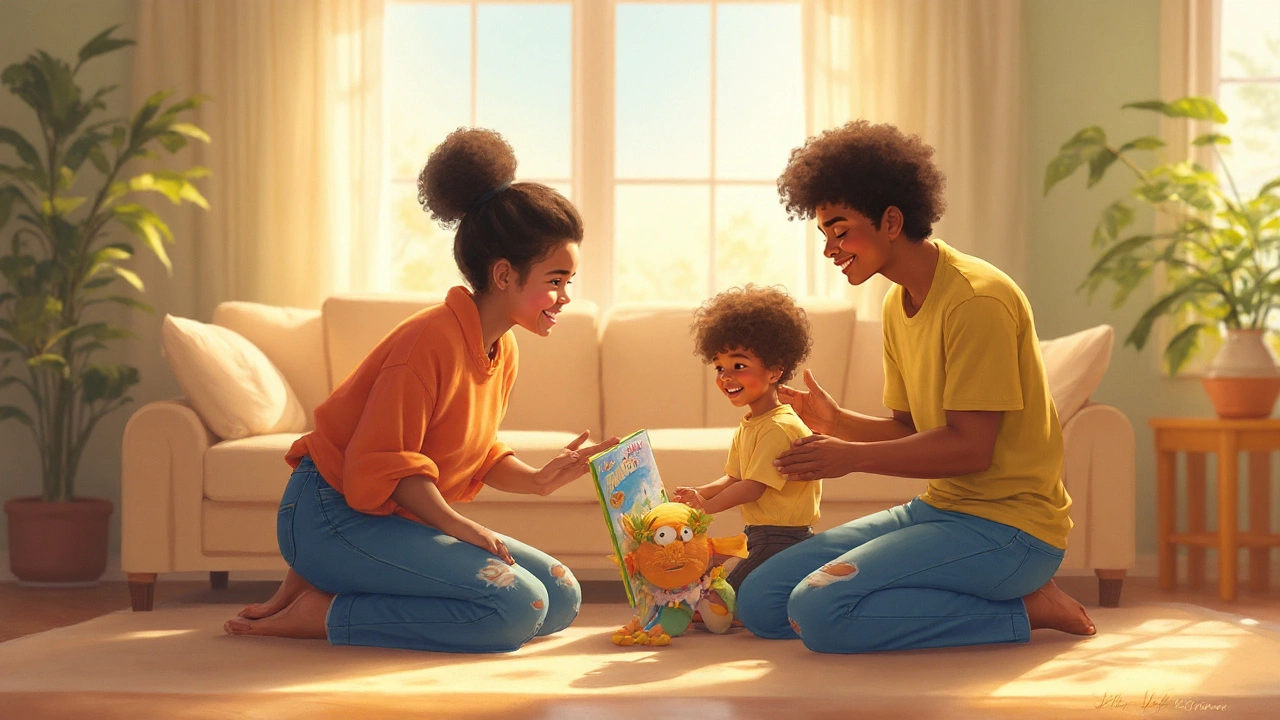Child with behavior disorder is a young person who displays persistent patterns of aggression, defiance, impulsivity or emotional dysregulation that go beyond typical childhood phases. These patterns can strain family life, school performance and the child’s self‑esteem. The good news is that parents can create a supportive home environment that reduces triggers, teaches coping skills and builds confidence. This guide walks you through the key steps, from figuring out what drives the behavior to putting a practical daily plan in place.
Understanding the Core of a Behavior Disorder
Before you can change anything, you need a clear picture of the disorder. Most behavior disorders-such as Oppositional Defiant Disorder (ODD) or Conduct Disorder (CD)-share three hallmarks: frequency (behaviors happen often), intensity (behaviors are severe), and impact (they disrupt family routines, school work, or friendships). According to the Australian Institute of Health and Welfare, about 6% of Australian children receive a diagnosis of a behavior disorder before age 12.
Knowing these stats helps you keep expectations realistic: progress is measured in small wins, not overnight miracles.
Gathering Data: Functional Behavior Assessment (FBA)
Functional behavior assessment is a systematic process that identifies the purpose or function behind a child’s challenging behavior. The three usual functions are:
- Attention seeking - the child acts out to get a reaction.
- Escape or avoidance - the behavior helps the child get away from a demand.
- Sensory stimulation - the child enjoys the physical feeling of the behavior.
Start tracking incidents with a simple table: note the time, what happened before, the behavior, and what followed. After a week of data, patterns emerge. For example, you may discover that tantrums spike right before bedtime, indicating a need for a more predictable routine.
Designing a Home Behavior Plan
A home behavior plan is a customized set of rules, rewards and calm‑down strategies that parents apply consistently. The plan should be simple-no more than three to five core rules-and should be posted in a visible spot, like the kitchen fridge. Here’s a quick checklist:
- Write the rule in child‑friendly language.
- Define a concrete, age‑appropriate reward (e.g., extra playtime, a sticker).
- Specify the calm‑down technique (deep breathing, a sensory box).
- State the natural consequence if the rule is broken (loss of a privilege).
Consistency is king. If a rule is enforced sometimes and ignored other times, the child’s brain receives a mixed signal and the behavior persists.
Everyday Strategies That Work
Below are the core tools most families find useful. Each tool ties back to the function you identified in the FBA.
Positive Reinforcement
Positive reinforcement is a learning principle where a desired behavior is followed by a rewarding consequence, increasing the likelihood of repetition. Research from the University of Melbourne shows that children who receive immediate, specific praise for small successes improve compliance by up to 45% within two weeks.
Tips for effective use:
- Be immediate - praise within 5 seconds of the behavior.
- Be specific - say “Great job putting your toys away without being asked!” instead of a generic “Good.”
- Vary rewards - mix verbal praise, stickers, and “choose a family activity” coupons.
Structured Routines
Routine is a predictable sequence of daily activities that reduces anxiety and provides clear expectations. A visual schedule (pictures or icons) helps children with limited verbal skills anticipate transitions.
Try a “morning flow” board that shows: wake‑up → bathroom → breakfast → brush teeth → backpack ready. Checking off each step gives the child a sense of achievement and minimizes power struggles.
Clear Communication Strategies
Using calm, concise language works better than lengthy explanations. The "first‑then" pattern (e.g., “First we finish homework, then you can play”) sets a clear sequence.
For children who struggle with abstract concepts, pair words with gestures or visual cues. This dual‑coding approach improves comprehension by about 30% according to a 2023 study by the Australian Child Development Centre.
Crisis Management and Calm‑Down Spaces
Even with the best plan, meltdowns happen. A designated calm‑down space equipped with soft lighting, a weighted blanket, and sensory toys can prevent escalation.
When a crisis hits:
- Stay low and speak in a soft tone.
- Offer a simple choice (“Do you want to sit on the beanbag or hug the pillow?”).
- Guide the child through a three‑step breathing exercise.
- After they’re calm, briefly discuss what triggered the outburst and what could be done differently next time.

When Professional Help Is Needed
Parents often wonder where to draw the line. If you notice any of the following, it’s time to consult a mental health professional specializing in child behavior:
- Frequent aggression that leads to injury.
- Self‑harm or talk of self‑destruction.
- School refusal lasting more than two weeks.
- Behavior that persists despite consistent home strategies.
Two evidence‑based therapies dominate the field:
| Intervention | Target Age | Core Focus | Evidence Support | Typical Duration |
|---|---|---|---|---|
| Applied Behavior Analysis (ABA) | 2‑12 years | Skill acquisition & behavior reduction | 90% of studies show significant improvement | 12‑24 months |
| Cognitive Behavioral Therapy (CBT) | 6‑16 years | Thought‑behavior link, coping skills | 70% show reduced aggression | 8‑16 weeks |
| Parent‑implemented Intervention | All ages | Training parents in reinforcement | 65% success in home settings | Variable (ongoing) |
Both ABA and CBT can be blended with the home plan you’ve already built. A therapist might coach you on how to use behavior disorder support techniques during daily routines.
Partnering with the School
The school is another arena where triggers appear. Share the FBA results and the home behavior plan with the teacher. Request a 504 plan or an Individualized Education Program (IEP) if the child’s needs qualify. Consistency across settings-home, school, after‑school care-creates a unified message that the child can trust.
Resources, Tools, and Next Steps
Here are a few ready‑to‑use resources:
- “My Behavior Tracker” app (free on iOS and Android) - simple incident log.
- Melbourne Kids Mental Health Service - offers low‑wait‑list assessments.
- Visual schedule templates from the Australian Department of Education.
- Sensorial kits (weighted lap pads, chewable jewelry) available at local therapy stores.
Start small: pick one behavior, run an FBA for a week, create a mini‑plan, and celebrate the first success. Then iterate-add another rule, adjust rewards, fine‑tune the calm‑down space. Over months, you’ll see the child gaining self‑regulation skills that stick.
Frequently Asked Questions
How long does it take to see improvement after starting a home behavior plan?
Most families notice small changes within 2‑4 weeks if the plan is applied consistently. Major shifts in patterns may take 3‑6 months, especially when the child is learning new coping skills.
What’s the difference between positive reinforcement and punishment?
Positive reinforcement adds something pleasant after a desired behavior, making it more likely to repeat. Punishment removes a privilege or adds an unpleasant consequence after an unwanted behavior, which can suppress the behavior but often raises anxiety and aggression.
Can a child with a behavior disorder outgrow it?
Many children learn to manage their symptoms with appropriate interventions and may no longer meet diagnostic criteria in adolescence. However, some retain challenges into adulthood, so early support remains crucial.
How do I involve my partner without blaming each other?
Adopt a teamwork mindset. Review the FBA together, assign clear roles (e.g., one tracks incidents, the other manages rewards), and hold brief weekly check‑ins to adjust the plan. Use “I” statements-“I noticed the timer helped today”-instead of “You never…”.
What should I do if my child refuses to use the calm‑down space?
Offer a choice: “Do you want to sit on the beanbag or hug the weighted blanket?” Giving the child a sense of control increases the likelihood they’ll use the space. If resistance persists, consult a therapist for alternative sensory strategies.
Is medication ever appropriate for behavior disorders?
Medication can be helpful when the disorder co‑exists with ADHD, severe anxiety, or mood dysregulation. It should always be prescribed by a paediatric psychiatrist and used in conjunction with behavioural strategies, not as a standalone solution.



Your guide covers a lot of ground, but it completely ignores the single most effective lever: absolute parental consistency. You can’t just sprinkle rules throughout the day and expect a child with a behavior disorder to magically internalize them. Every morning, every bedtime, and every transition must follow the exact same script without exception. If you deviate even once, the child learns that the system is negotiable, which fuels defiance. Create a written schedule, post it prominently, and rehearse it with the child until it becomes muscle memory. Pair each step with an immediate, specific praise that names the exact behavior you want to reinforce. Do not settle for generic compliments like “good job”; say “great job putting your shoes away without a reminder.” Reward the compliance with something the child values, but keep the reward small and predictable. The calm‑down space you mention should not be a luxury-it must be a mandatory part of the daily routine, like brushing teeth. Teach the child the breathing exercise at a time when they are calm, not in the heat of a meltdown. When a crisis does occur, enforce the natural consequence immediately, not after a lengthy discussion. Document every incident in a spreadsheet with columns for trigger, behavior, and outcome, and review it weekly. Share this data with any professional you involve so they can see the pattern you’ve identified. If you notice that a particular trigger recurs, adjust the environment instead of blaming the child’s willpower. Do not let the child’s anger dictate the household schedule; you set the tempo. Consistent enforcement also means both parents must be on the same page, so hold a short nightly briefing to align your approaches. Finally, celebrate tiny victories publicly; a child’s self‑esteem grows when they hear the family acknowledge their progress.